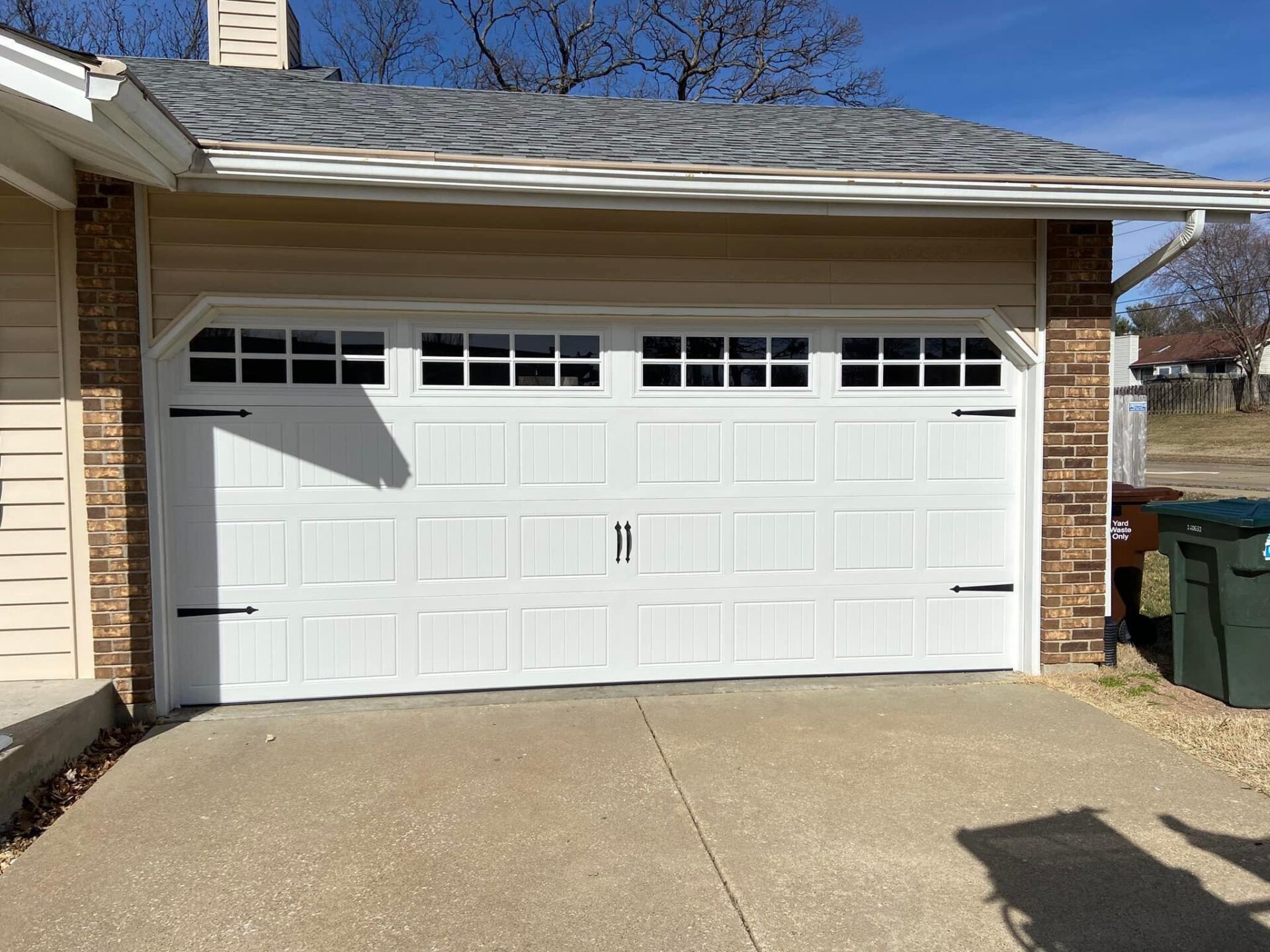Insulated vs Non-Insulated Garage Doors

When selecting a garage door, one of the pivotal decisions homeowners face is choosing between insulated and non-insulated options. This choice significantly impacts energy efficiency, noise levels, durability, and overall comfort within the garage space. But what are the specific differences between insulated and non-insulated? Exploring their respective advantages and disadvantages to assist you in making an informed decision. Our team here at Fowler Garage Door of St. Louis is here to help you in making the right decision.
Understanding Insulated Garage Doors
Insulated garage doors are constructed with multiple layers, typically comprising steel or aluminum exteriors with insulating materials like polyurethane or polystyrene sandwiched in between. This design enhances thermal efficiency, providing a barrier against external temperatures and contributing to a more stable internal environment.
Advantages of Insulated Garage Doors
- Energy Efficiency: Insulated doors help maintain a consistent temperature within the garage, reducing the workload on your home’s heating and cooling systems. This can lead to noticeable savings on energy bills, especially if the garage is attached to the main living area.
- Durability: The multi-layer construction of insulated doors enhances their strength, making them more resistant to dents, warping, and other forms of damage. This durability ensures a longer lifespan and reduces the need for frequent repairs.
- Noise Reduction: The insulating materials act as sound barriers, minimizing noise from both outside and inside the garage. This is particularly beneficial for homes where the garage is used as a workspace or recreational area.
- Improved Comfort: By maintaining a more stable temperature, insulated doors make the garage space more comfortable for various activities beyond parking, such as hobbies, workouts, or storage of temperature-sensitive items.
Disadvantages of Insulated Garage Doors
- Higher Initial Cost: The enhanced features and materials used in insulated doors result in a higher upfront investment compared to non-insulated options.
- Increased Weight: The additional layers add weight to the door, which may require more robust opening mechanisms and could lead to increased wear on the garage door opener over time.
Understanding Non-Insulated Garage Doors
Non-insulated garage doors are typically single-layer constructions made from materials like steel or aluminum. They serve as basic barriers against external elements but lack the thermal and acoustic benefits provided by insulation.
Advantages of Non-Insulated Garage Doors
- Lower Initial Cost: Non-insulated doors are generally more affordable, making them an attractive option for homeowners on a tight budget or those with detached garages where thermal efficiency is less critical.
- Lighter Weight: The simpler construction results in a lighter door, which can reduce strain on the garage door opener and may lead to lower maintenance costs over time.
Disadvantages of Non-Insulated Garage Doors
- Poor Energy Efficiency: Without insulation, these doors allow external temperatures to influence the garage’s interior, leading to potential increases in heating and cooling costs for attached garages.
- Reduced Durability: The single-layer design is more susceptible to dents, rust, and other damages, potentially leading to higher maintenance and earlier replacement needs.
- Increased Noise Levels: Non-insulated doors offer minimal sound dampening, which can result in louder operation and greater transmission of external noises into the garage space.
- Unstable Interior Temperatures: The lack of insulation means the garage is more susceptible to temperature fluctuations, making it less comfortable for activities beyond vehicle storage.
Factors to Consider When Choosing Between Insulated and Non-Insulated Garage Doors
- Geographical Location and Climate: In regions with extreme temperatures, insulated doors can significantly enhance comfort and energy efficiency. Conversely, in milder climates, the benefits may be less pronounced.
- Garage Usage: If the garage serves as a workshop, gym, or living space, insulation becomes crucial for maintaining a comfortable environment. For garages solely used for vehicle storage, non-insulated doors might suffice.
- Attachment to Living Spaces: Attached garages can influence the overall temperature of adjacent rooms. Insulated doors help mitigate unwanted heat loss or gain, contributing to a more stable indoor climate.
- Budget Constraints: While insulated doors have higher upfront costs, they can lead to long-term savings on energy bills and maintenance. Non-insulated doors offer immediate cost savings but may incur higher expenses over time due to energy inefficiency and potential repairs.
- Aesthetic Preferences and Home Value: Insulated doors often come in a variety of designs and finishes, potentially enhancing curb appeal and increasing property value. Non-insulated doors may offer fewer customization options.
The decision between insulated and non-insulated garage doors hinges on various factors, including climate, intended garage use, budget, and personal preferences. Insulated garage doors provide benefits such as energy efficiency, durability, noise reduction, and enhanced comfort, making them a worthwhile investment for many homeowners. Non-insulated doors, while more affordable initially, may lack these advantages and could lead to higher costs in the long run due to energy inefficiency and maintenance needs.
At Fowler Garage Door Service, we understand the importance of selecting the right garage door to suit your specific needs. Our team of experts is dedicated to providing personalized guidance and top-quality installation services to ensure your garage door not only functions seamlessly but also complements your home’s aesthetic. Contact us today to explore our range of insulated and non-insulated garage doors and discover the perfect fit for your home.




